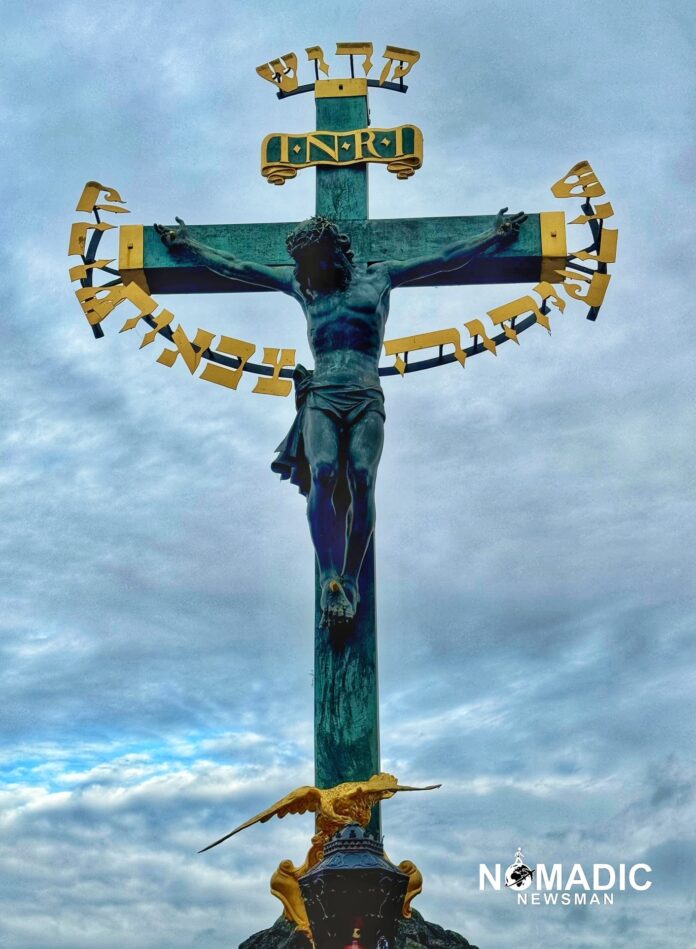Prague’s Charles Bridge boasts a collection of 30 statues arranged in two rows on each side. Predominantly Baroque in style with religious themes, these statues, primarily from the 17th and 18th centuries, contribute to the bridge’s artistic allure. The inaugural statue, dedicated to John of Nepomuk, the Bohemian saint, was introduced in 1683. To safeguard the originals, now housed in the National Museum and Vyšehrad, gradual replacement with copies is underway for preservation purposes. Here are just a few images.


St. Barbara, Margaret and Elizabeth: St. Barbara is a Christian saint and martyr venerated in the Catholic, Orthodox, and Anglican churches. She is the patron saint of artillerymen and firefighters. St. Margaret of Antioch is the patron saint of pregnant women, and St. Elizabeth of Hungary is the patron saint of bakers, beggars, and the homeless.


A plaque adorns a statue portraying a man being thrown off the bridge in 1393. The oldest statue, completed in 1683, represents Saint John of Nepomuk, the court priest of King Wenceslas IV. Legend suggests that the king ordered his death because Saint John refused to disclose the queen’s confession. In reality, Saint John invited a bishop to Prague, a move seen as defying the king. Touching the statue has become a Prague ritual, believed to bring good luck and ensure a swift return to the city.
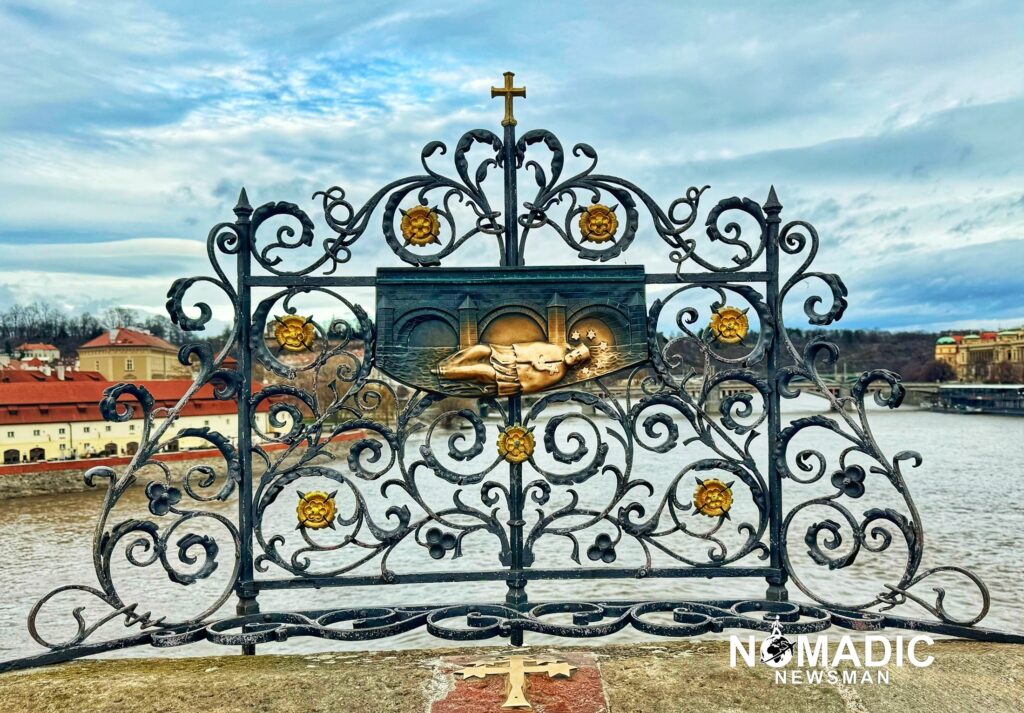

Saint John of Nepomuk (1345-1393) met his demise by being thrown off Prague’s Charles Bridge and drowned, an act orchestrated by King Wenceslas of Bohemia. Notably, he is revered as the patron saint of bridges.
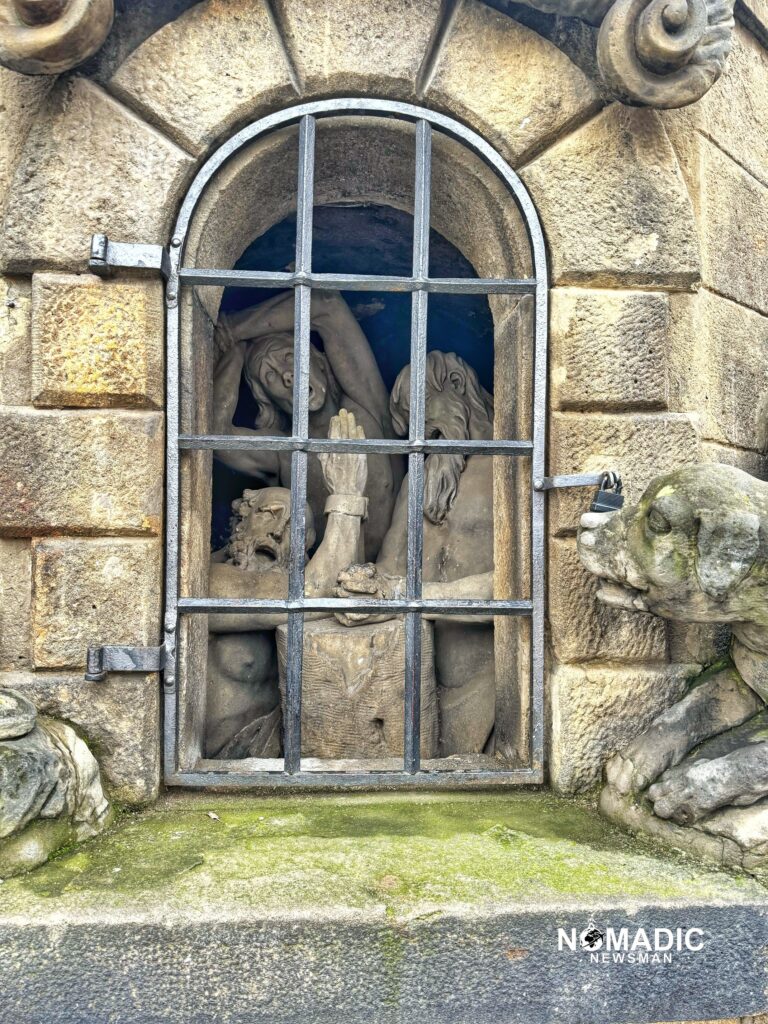

The statue featuring John of Matha, Felix of Valois, and Saint Ivan stands out as the largest and most expensive on the bridge. Depicting John and Felix, renowned for purchasing and liberating Christians held captive by non-Christians, the statue is a testament to their charitable acts. Crafted in 1714 by Ferdinand Brokoff, the Charles Bridge Statue portrays Christians held captive by Ottoman Turks and the saints who founded the order dedicated to liberating Christians from enslavement.
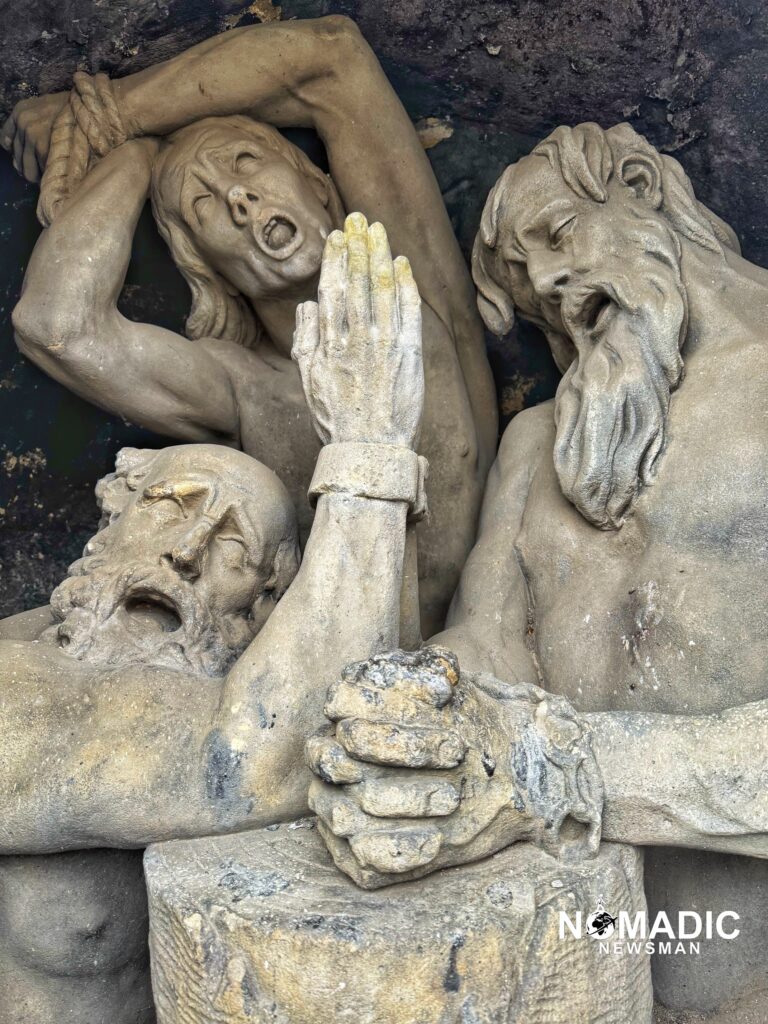

Below this monumental structure, a grated cave is situated, housing three enslaved Christians fervently praying for salvation.
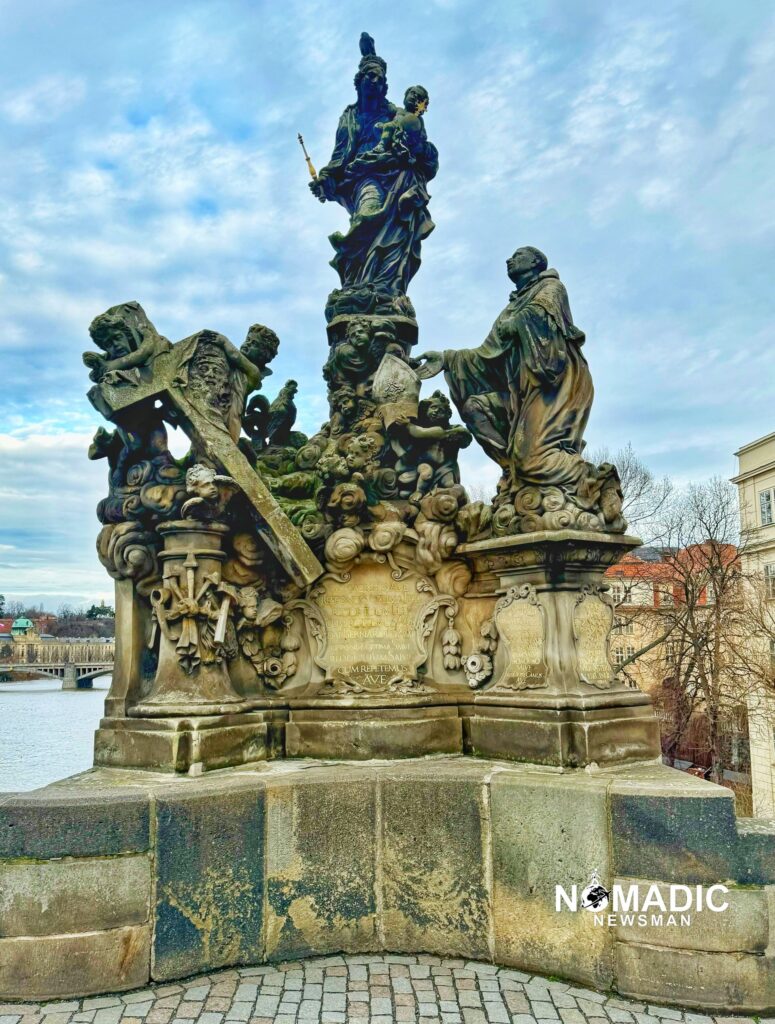

This baroque statue depicts the Madonna and Saint Bernard. Crafted by sculptor Matij Vaclav Jack in 1709, it features the Virgin Mary at the center, holding the infant Jesus and a wand. On her right, St. Bernard, the Cistercian Order founder, kneels and gazes upward, accompanied by an angel holding an abbatial infula. On the left, angels carry symbols of Christ’s suffering, including a cross, spikes, hammer, pliers, a crowing rooster associated with Peter’s denial, an image of Christ’s face on Veronica’s scarf and dice used by soldiers for Christ’s clothes.


The official title is the Statuary of the Holy Crucifix and Calvary, and while it may seem like just another statue on Charles Bridge, it holds a unique historical and religious significance. Originally, it was the first figure erected on the bridge, making it the most historic and religiously divisive. The story encompasses legends and blasphemy, with two key aspects. This was also one of the places used for public executions. In 1696, the addition of the golden Hebrew text on the crucifix serves as a stark illustration of Medieval European antisemitism. The Prague authorities, accusing a local Jewish leader named Elias Backoffen of blasphemy, imposed a peculiar punishment. He was mandated to raise funds to acquire gold-plated Hebrew letters encircling the statue’s head.
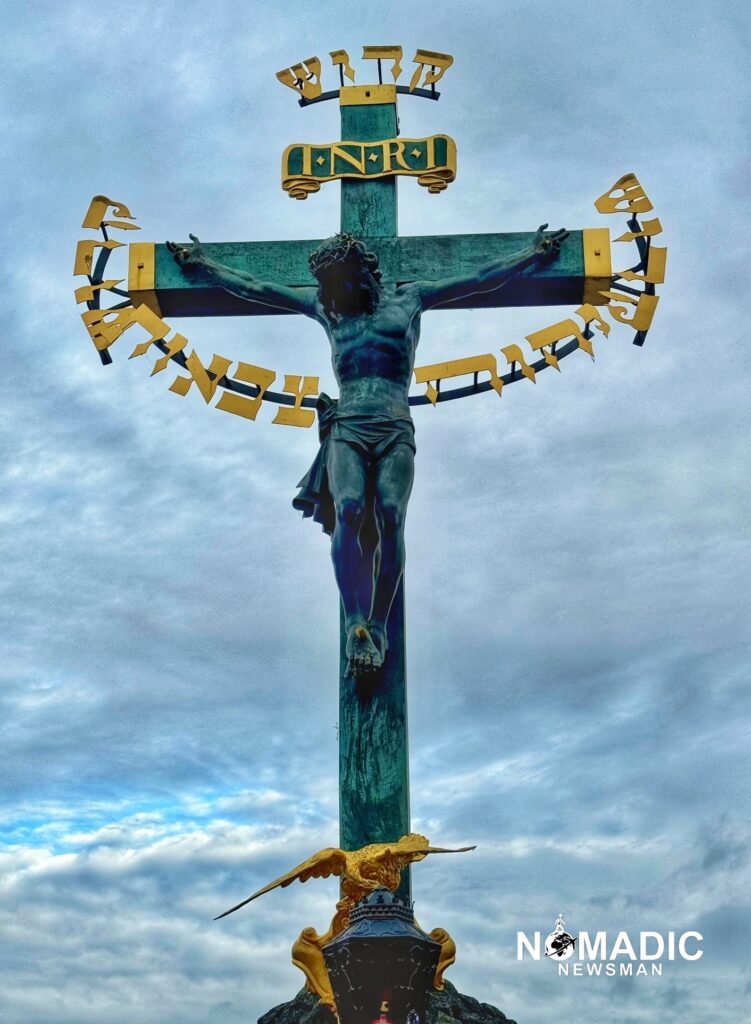

These letters spelled out “Holy, Holy, Holy, the Lord of Hosts,” representing the Kedusha from the Hebrew prayer and originating from the vision in the Book of Isaiah. The inscription symbolically humiliated and degraded the Jewish community in Prague.
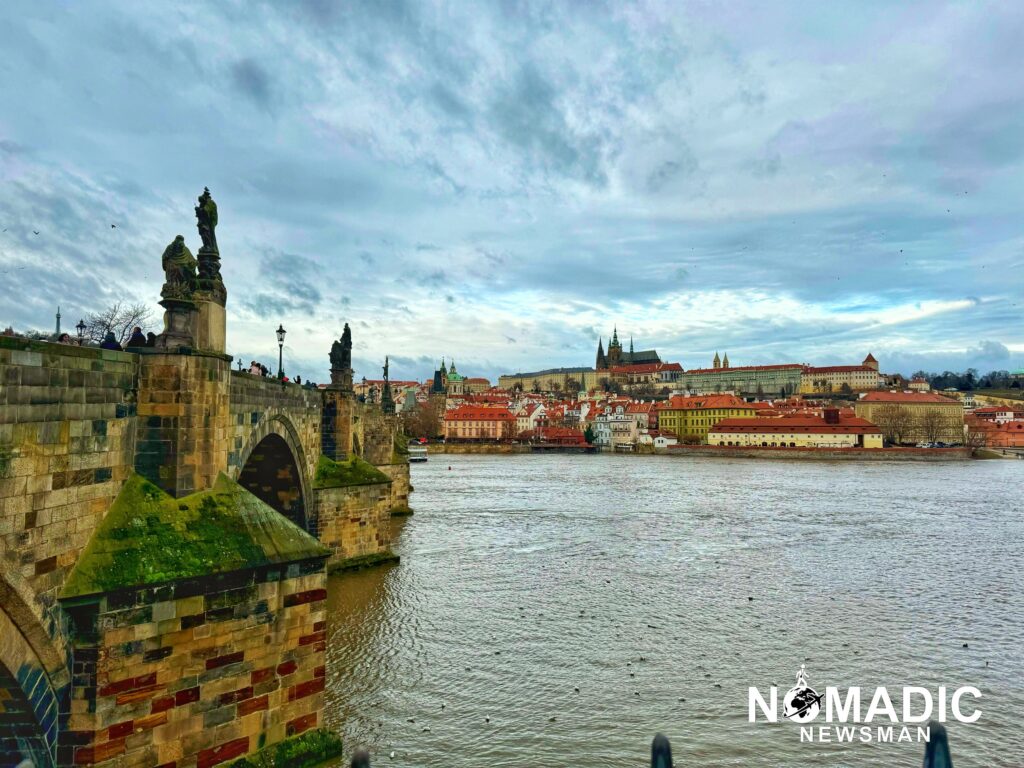

A view of Prague Castle in the distance and the Charles Bridge on the left

